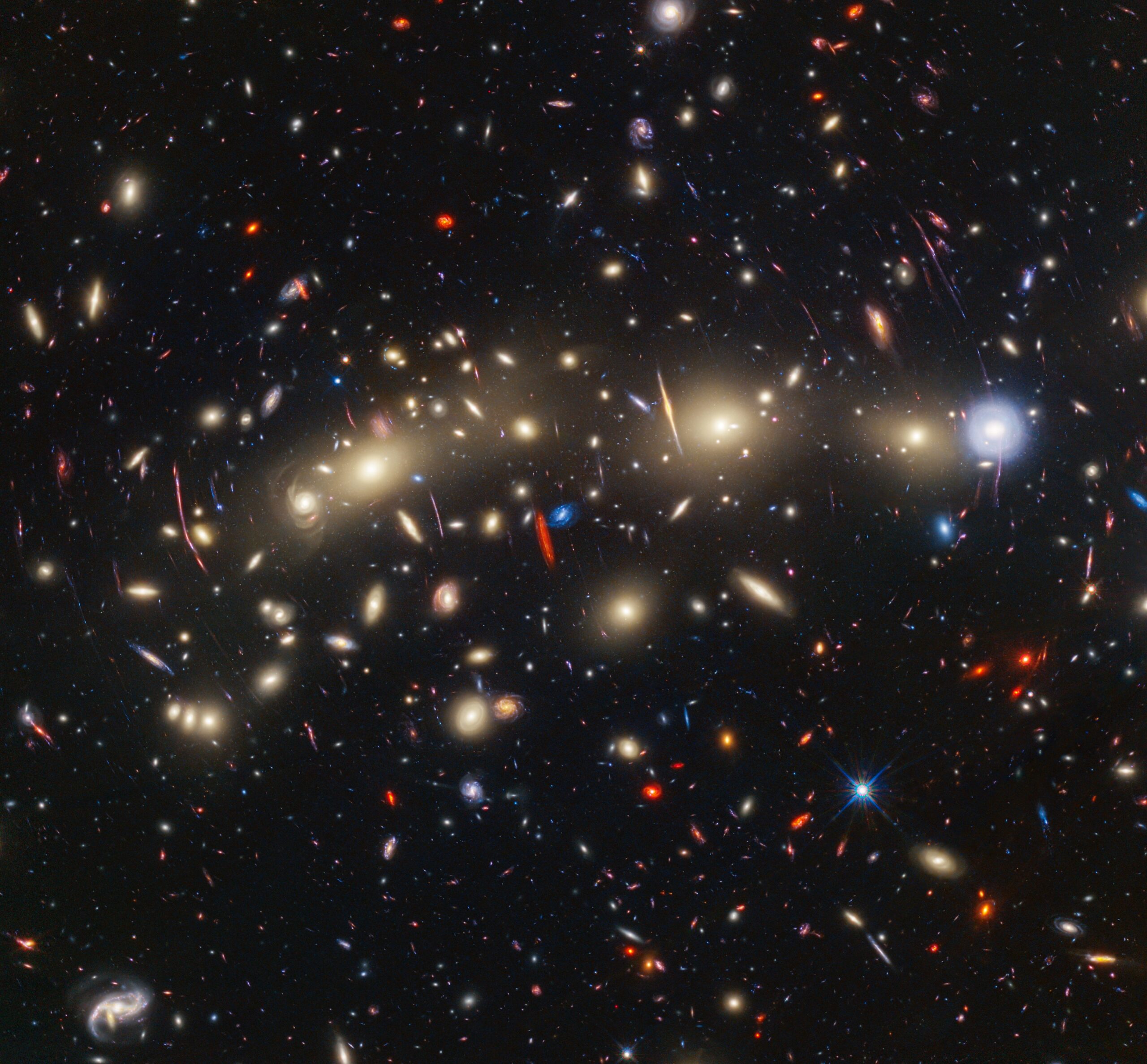Astronomers used images from the Hubble and Webb space telescopes to produce this view of MACS0416, a pair of colliding galaxy clusters 4.3 billion light-years away. The combined gravity of the galaxies acts as a lens, magnifying the view of background galaxies. The lens also distorts some of the galaxies, making them look like curved streaks of light. The bluer galaxies tend to be closer to us, and they're giving birth to many new stars. The redder galaxies are farther and contain more dust. Using measurements of the gravitational field, scientists can "flatten" the view of the distorted galaxies, allowing them to see exploding stars and other details. The image combines visible and ultraviolet wavelengths from Hubble with infrared wavelengths from Webb. [NASA/ESA/STSci/Jose M. Diego (IFCA), Jordan C. J. D'Silva (UWA), Anton M. Koekemoer (STScI), Jake Summers (ASU), Rogier Windhorst (ASU), Haojing Yan (University of Missouri)]
Shopping Cart
